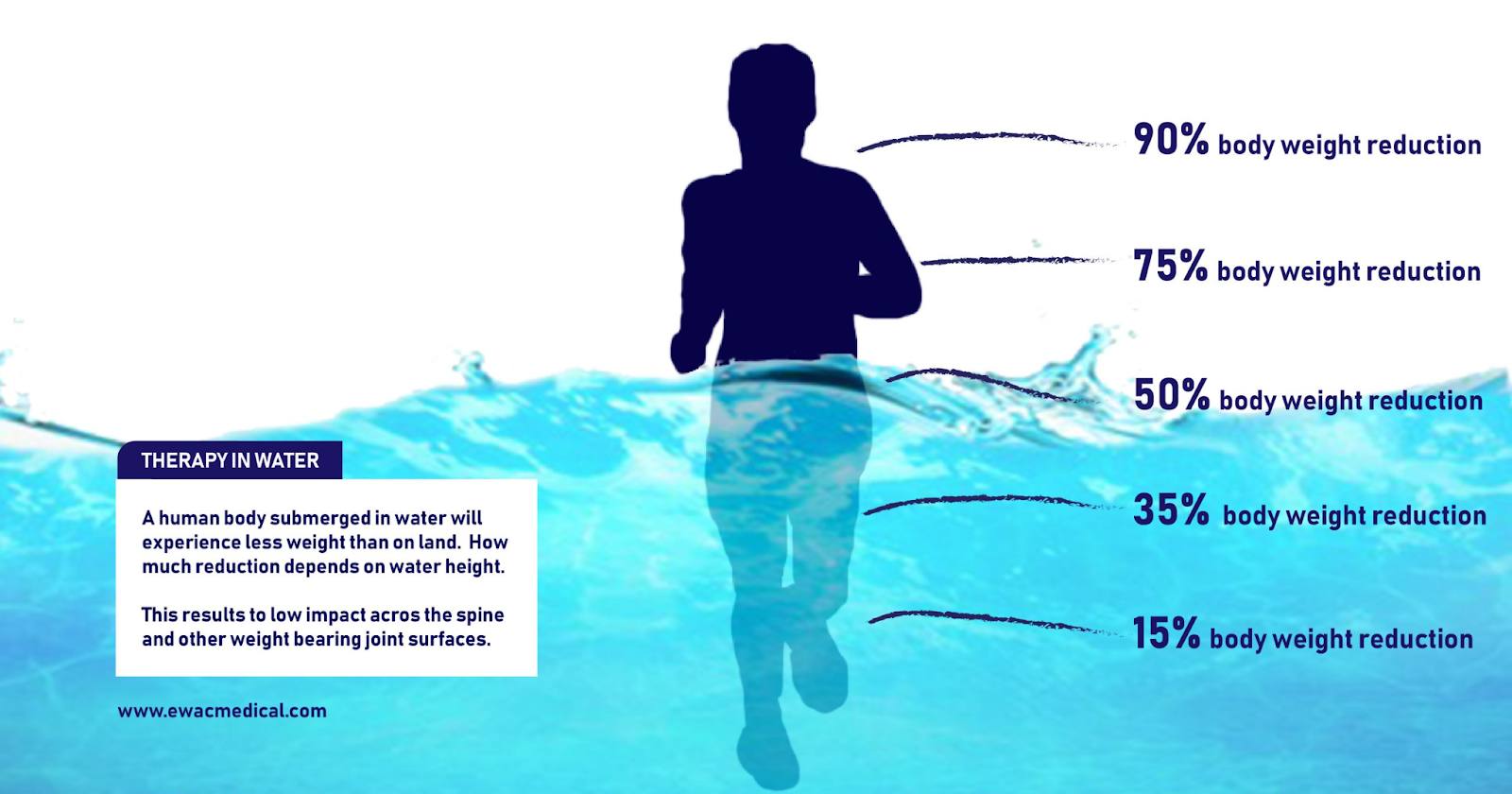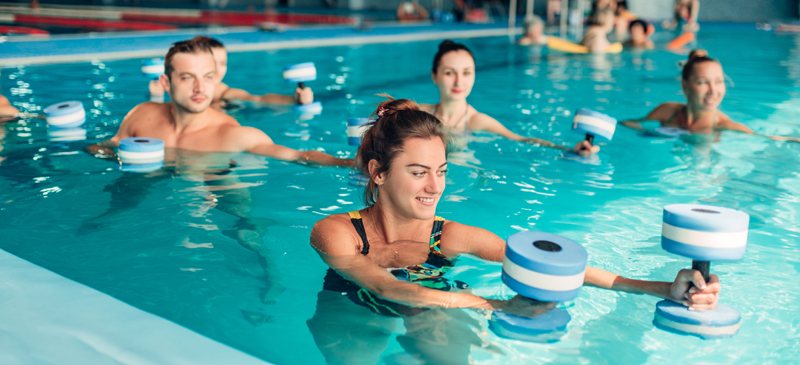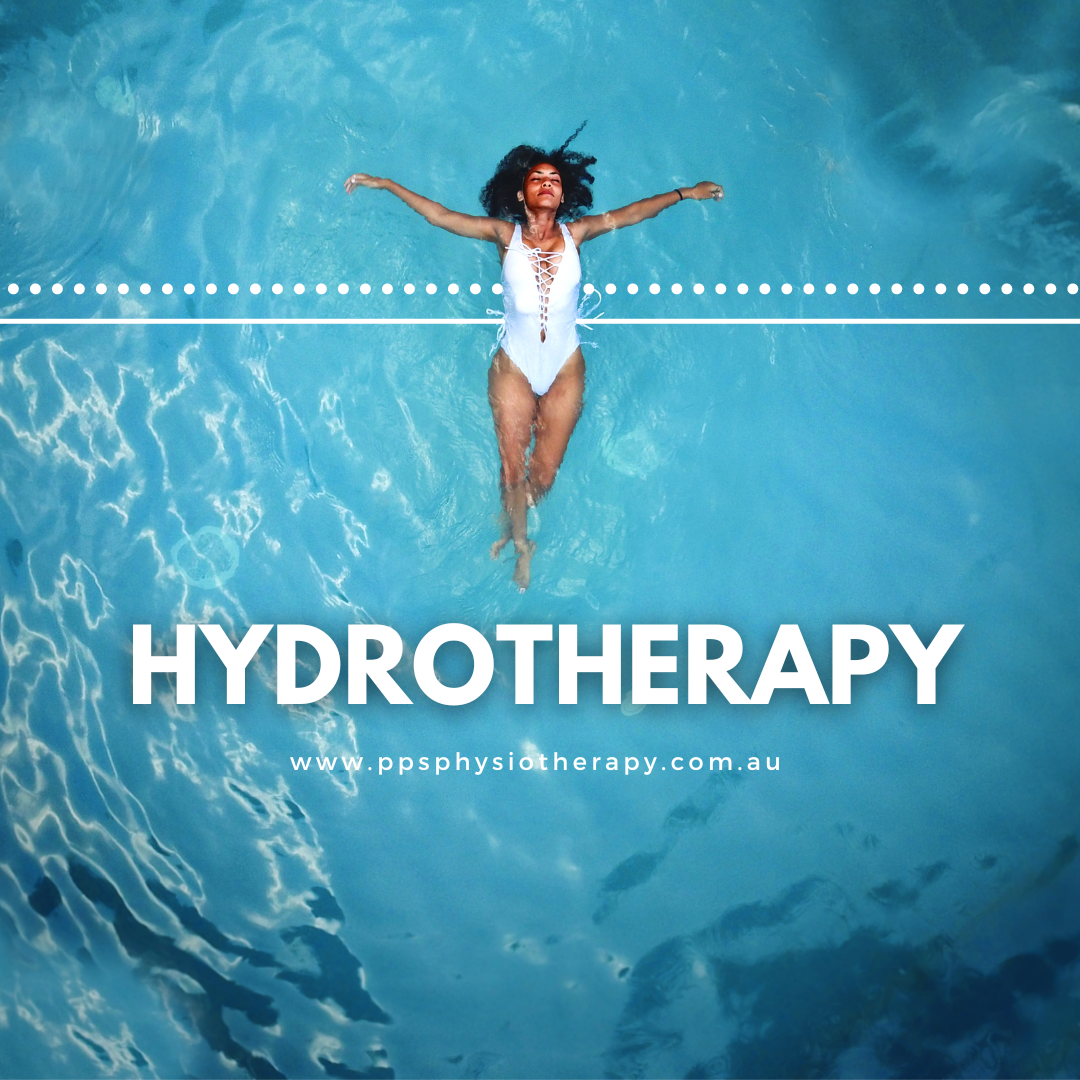The use of water for various treatments is almost as old as mankind itself. It is one of the most basic treatment forms used in natural medicine, and has been widely used dating back to ancient cultures in India, China, Greece and Egypt.
Hydrotherapy or aquatic physiotherapy is the completion of therapeutic exercise within a heated pool. Within physiotherapy, the properties of water can be used to achieve specific benefits and goals. This can be used to treat a variety of conditions including arthritis, fibromyalgia, various inflammatory conditions, strains, fractures and assist in post-operative rehab.
How does it work?
Hydrotherapy works via both mechanical and thermal effects. The body reacts to warm stimuli and the pressure/sensation exerted by the water. As a result:
- The warmth of the water prompts increased blood flow throughout the body
- Supports weight via buoyancy
- Provides resistance to movement through the water, as it is denser than air
These sensations stimulate the immune system and influence the release of stress hormones thereby improving circulation and blood flow, as well as reducing the body’s sensitivity to pain. In most circumstances, heat is used to soothe the body and slow down internal organ activity. Being submerged in water during hydrotherapy also induces a hydrostatic effect and massage-like feeling. This also increases blood circulation whilst relieving tight muscles.
It has been shown to create various effects on a number of systems depending on the temperature. Water immersion in a 32 degree pool was shown to reduce the heart rate by 15% and systolic and diastolic blood pressure by 11 and 12% respectively.

What are the benefits?
Hydrotherapy has a variety of positive benefits on the body due to these unique properties, including:
- Pain relief – Warm water had a significant pain relieving effect in people with chronic diseases according to one review. The water may ease the signals for pain and relax muscles.
- Increased muscle strength – Hydrotherapy is an ideal environment for strengthening weak muscles, as exercises that are performed on land can be modified for water, where it also provides extra resistance. Difficulty can be increased by using flotation devices or moving through the water more quickly
- Increased cardiovascular fitness – The resistance as the limbs move through water builds muscle and improves cardiovascular fitness
- Improved balance – Performing balance exercises in water provides an external challenge in and of itself, and thus balance exercises which may be difficult to perform on land can be done safely in water
- Improved mental health – Water based activities can improve mental health in some people according to the CDC (Centres for Disease Control and Prevention). For example, people with fibromyalgia may find aquatic physiotherapy reduces anxiety and depression
- Low impact – Hydrotherapy exercises are very low impact due to the water supporting your body weight. This helps people exercise in water without putting too much stress on their joints, which can be especially helpful for people with conditions such as osteoarthritis. For example, one study found that people with knee osteoarthritis had improved pain and function after 8 weeks of aquatic exercise
- Relaxation – Hydrotherapy can aid relaxation by easing tension in the muscles whilst promoting a relaxed mind state
- Pregnancy – The low pressure environment during hydrotherapy may help with general aches and pains that pregnancy can cause
How do I access hydrotherapy?
Most public and private hospitals will have access to a hydrotherapy pool where inpatients can complete hydrotherapy as part of their rehabilitation.
Physiotherapists are primary contact practitioners, so a doctor’s referral is generally not required unless a third party (e.g. WorkCover, DVA, NDIS) is paying for the sessions. For chronic conditions, your GP may also refer you for a Chronic Disease Management Plan which covers up to 5 sessions per year of physiotherapy. You will also get a rebate from private health insurance if extras are covered, as hydrotherapy is a form of physiotherapy. How much you will get back is dependent on the health fund and your level of cover.
What is involved in a hydrotherapy session?
Hydrotherapy sessions can be in either a group or individual setting. Sessions will generally last between 20 and 45 minutes, depending on your individual health status, injuries and fitness level. During this session your physiotherapist will provide you with a tailored exercise program for you to complete in the water. They will also supervise you either from outside or within the pool, and provide assistance where required to ensure maximum safety. Your physiotherapist will also continually monitor your progress and adjust your program as you go, ensuring that you continue to strengthen and benefit from the sessions. Most people attend hydrotherapy one to two times per week, however similar to the gym, some people get more benefit out of attending on a more frequent basis as it is an exercise based treatment modality.

Hydrotherapy is a fun, safe and low impact method of treating a wide variety of musculoskeletal conditions. When conducted by a trained physiotherapist you will receive a tailored exercise program, supervision to ensure your safety and optimal engagement with your rehabilitation.
If you would like to find out more about hydrotherapy or if it would benefit you, then please contact our clinic today on 9672 6752 (Kellyville) or 9871 2022 (Carlingford) .


